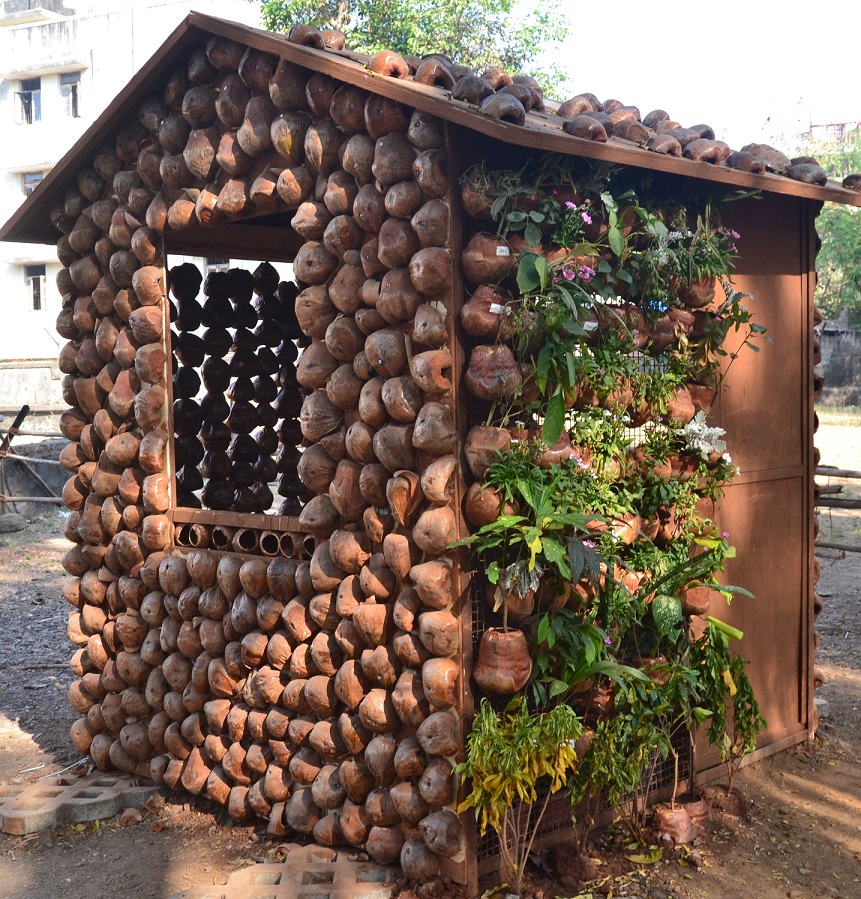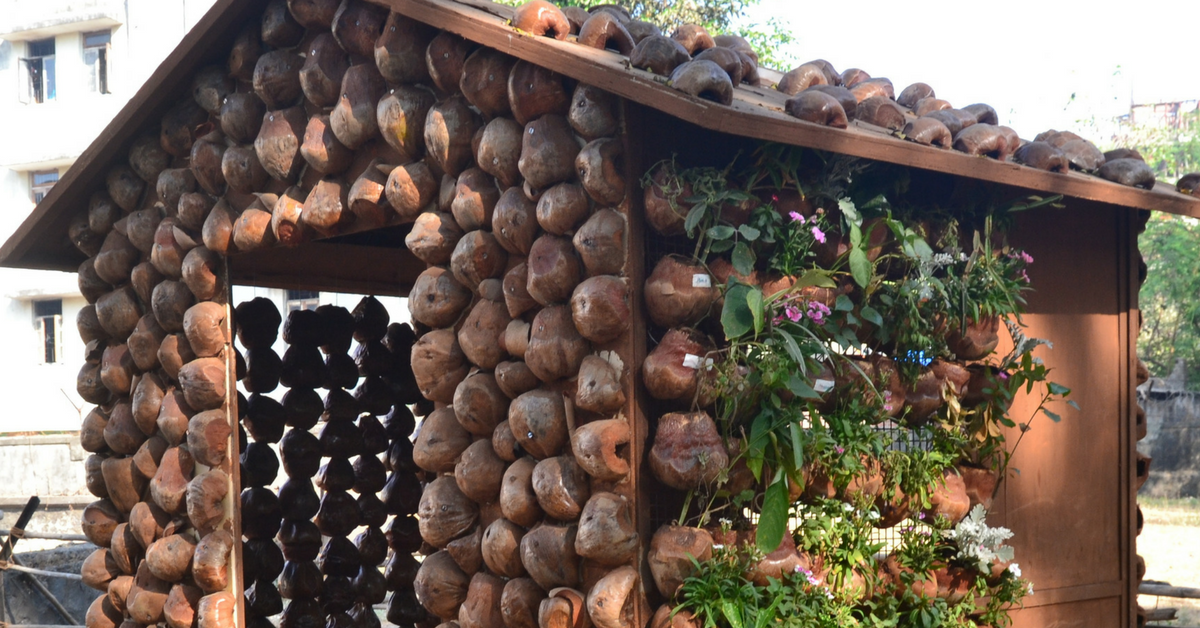The last few decades have witnessed rapid urbanization in our country; today more and more people from the rural areas are moving to cities in search of a better life and job opportunities – resulting in insufficient accommodation. It is a truth that crores of people are forced to live in slums; did you know? Mumbai alone has fifty-five percent of its population staying in such slum areas.
To address this dreaded issue of housing, Manish Advani, a marketing professional, and Jayneel Trivedi, an architect, have put together a great solution. With the thought of designing eco-friendly affordable homes in place, the duo looked at ways to provide a sustainable housing model for the slum pockets in cities – Result? Their efforts led to the construction of a beautiful house using ‘tender coconut shells’ and scrap materials.
Read: 7 Most Commonly Used Construction and Building Materials in India
A Sneak Peek In The Construction Process Of The Tender Coconut House


Manish and Jayneel constructed this house with the support of students from Somaiya Vidya Vihar, in Mumbai. The main construction materials involved in building this amazing coconut shell structure include scrap wood, metal, and coconuts. And the most amazing part – it took only 2 days to make the structure.
Before the structure is built, coconut shells are collected and seasoned; then these are kept under the sun to dry for around 7-8 days, just like how the bricks are sundried. This process ensures the seasoned shells become hard like wood after which it can be used whole or cut into half, as per the requirement. Painting and coating come next; the coconut shells are plastered with mud. The mud coating acts as an insulator with its cavity. The entire process takes around 10-12 days.
A prototype coconut house was built by the makers, each wall in this prototype was designed with different concepts. According to Manish Adwani, one wall i.e. the partition wall had uncovered coconut shells. The second one was covered with mud, where the coconut wall was plastered with mud. The third internal wall was a partition wall and the fourth one was a vertical garden wall where coconut shells could be used to grow medicinal plants like aloe vera, ajwain, as well as household ones like tomatoes, beans, chilly, etc.
Guess the Construction Cost
Given the fact that these tender coconut shell homes are extremely easy to construct, anyone with a basic knowledge of construction can build these homes. Also, these homes are certainly a better option when compared to the tin shed homes synonym with slums and unplanned construction. The cost involved in the construction for a typical house of 64 sq. ft. is just rupees 15,000.
Advantages Of Coconut Homes
The advantages of building with eco-friendly building materials are pretty well-known today, and tender coconut shells are no exception. Here are a few advantages:
1. Environment-friendly – Since coconut homes follow the eco-friendly principle of ‘reduce, recycle, reuse’, the building materials used are 100% natural like coconut shells and mud, waste and recycled materials like wood and metal.
2. Natural air cooler – Coconut homes are built from natural material which is cooler; hence, these contribute to a cooler atmosphere inside the home.
3. Energy savings and insulation – Coconut shells have air cavities that can reduce heat and keep the house naturally cool. Since indoor temperatures are reduced the need for air conditioners and coolers is minimal – clearly meaning less electricity bills.
Coconut Shells Homes – Why We Need More
Coconut shells are very hard to compost, this fact motivated Advani and Trivedi to reuse them in the construction of houses. Coconut shells can block gutters and lead to water-logging issues during monsoons if discarded recklessly. More than that, water stagnation in the coconut shells can promote the breeding of mosquitoes which contribute to the spread of life-threatening diseases like dengue and chikungunya.
Using coconut shells in the construction of homes is a great idea of putting them into use. And when we have more coconuts in action, we are less likely to harm our environment, isn’t it?
Curated by editor at Wienerberger India
Like this story? Or have something to share? Write to us: gosmartbricks@gmail.com or connect with us on Facebook and Twitter.








